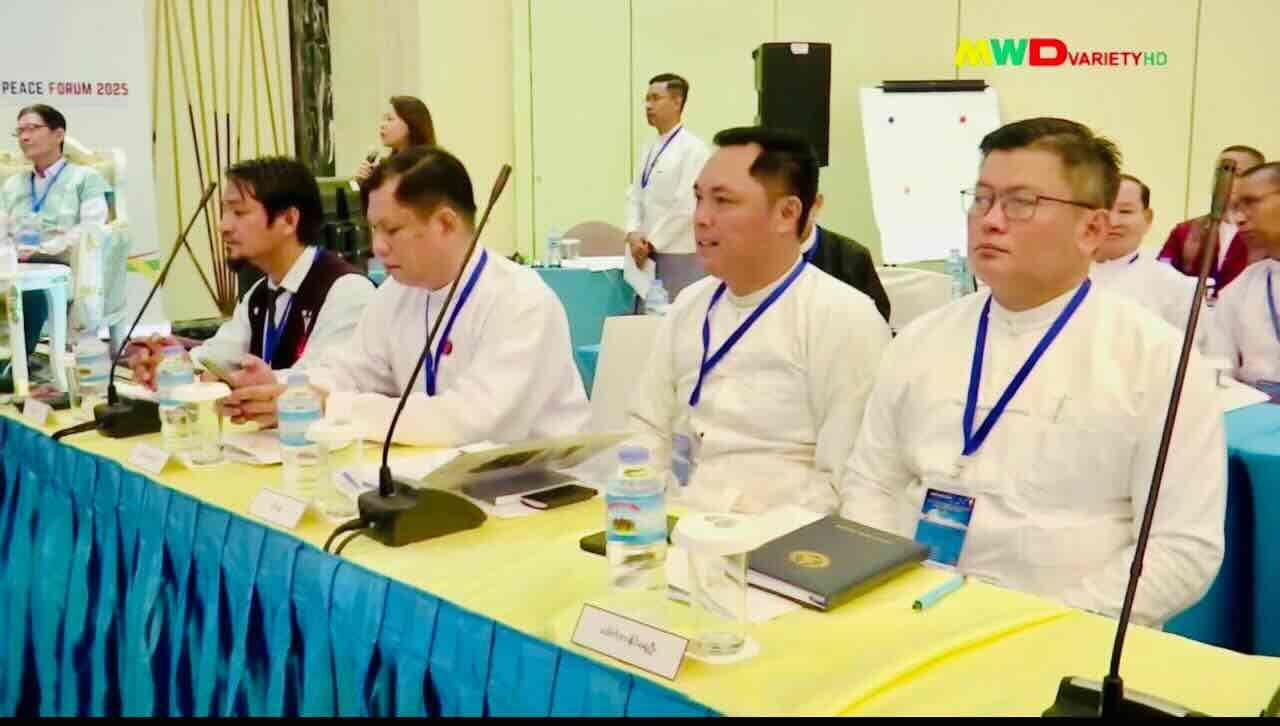Naypyidaw’s Peace Forum Was a Propaganda Stunt
Is the Centre for Humanitarian Dialogue polishing junta narratives?
The so-called Peace Forum in Naypyidaw has now wrapped up. And every time I see the words “peace forum,” I can’t help but think of the Centre for Humanitarian Dialogue (HD). Especially when the forum’s theme was this masterpiece of meaninglessness:
“Towards a New Nation of Peace and Prosperity through the Integration of Peace, Elections and Development.”
I say this as someone who has written a three-part critique of HD’s involvement in Myanmar. (In those pieces, National Unity Government deputy minister Aung Kyaw Moe memorably warned that the current crisis has no room for “any cowboy diplomacy” – a pointed rebuke to the cowboy diplomats of HD trying to cut backroom deals with a murderous junta).
Wherever you see Myanmar’s generals talking about peace, there’s often a quiet, western-suited fixer not far behind, murmuring about “confidence building” and “inclusive dialogue,” and “elections,” even when mass murder is still fresh in the air.
So I wondered: was HD involved in this Peace Forum?
I didn’t have to look far. Myanmar’s Thayninga Institute for Strategic Studies - yes, that Thayninga Institute - posted a photo of participants on their Telegram Channel. And sure enough, HD Centre’s name was listed among those present.
For those who’ve forgotten, Thayninga Institute was one of the outfits that sent an amicus brief to the International Criminal Court (ICC) claiming that over 600,000 “Bengalis” (their word for Rohingya) had left voluntarily after attacks by the Arakan Rohingya Salvation Army. They argued that the ICC had no jurisdiction over deportation allegations.
This is not really a think tank. It is a propaganda mill dressed up as a research centre. And it was deeply embedded in the so-called Peace Forum.
Thayninga’s founder, Naing Swe Oo, was there too. He’s a long-time military man and, according to Justice for Myanmar, a “staunch supporter of genocide” who has helped the military preserve its total impunity. He should not be near any discussion on peace. Yet there he was, mingling with diplomats, shaking hands, and playing his role in the charade.
In his own words, he described the forum as a place to “discuss what Myanmar is currently experiencing, what strategies should be adopted for the future, and how to adopt a strategy for national security.” He emphasised “how to negotiate to end the conflicts” and expressed pleasure at having a roundtable discussion about elections. According to him, “only by abandoning the armed method and discussing at the table will we come closer to lasting peace.” Coming from someone who has consistently sided with a regime that rules by violence, these comments are as hollow as they are hypocritical.
Nowhere in the junta media or indeed Burmese media reports or summaries could I find a single reference to the Rohingya. Not a word. You’d think a peace conference, held in a country where a genocide has recently taken place, might at least mention the million people forced into camps and exile. But no. Not even a lie.
The Daily Star (Bangladesh), citing the forum, noted that China’s envoy Deng Xijun suggested Myanmar may take back Rohingya living in Cox’s Bazar, to their villages in northern Maungdaw instead of “model villages” or camps. How is that possible, you might ask. It isn’t. It is just another media-friendly phrase to be consumed by diplomatic and policy circles.
The overwhelming silence re Rohingya is telling. It reveals exactly what this forum was really about: not peace, not justice, not inclusion but legitimacy for the junta. The event was designed to sell the illusion that the junta is a reasonable partner in dialogue. Never mind the bombs still falling, the political prisoners still rotting in jail, the villages still burning in Sagaing, Chin and Karenni.
Observers across Myanmar’s civil society have already said what needs to be said: this was a shallow diplomatic stunt, not a step toward genuine …anything.
Some of the proposals reportedly discussed included economic zones for ceasefire groups as a carrot to join elections, plans for disarmament, and of course calls for “inclusive” elections. But all of this is built on a false premise: that the military junta is a legitimate actor, capable of leading Myanmar into democracy. It isn’t. The 2025 elections it plans are a sham. The generals aren’t preparing to hand over power - they’re buying time, rewriting the rules, and using conferences like this to mask their continued violence.
I also hear through the grapevine that NUG’s lack of success in getting international attention was highlighted. That might be true. But it is not as if the military’s global reputation is just glowing in comparison.
And this is where outfits like HD come in. By showing up, they lend credibility. They let the junta say, “Look, we’re engaging with international experts. We’re inclusive. We’re serious.” Their quiet presence signals to diplomats and donors that something legitimate is happening. In reality, their discreet diplomacy has become a convenient backdrop for military theatre.
The real peace process in Myanmar isn’t happening in hotels in Naypyidaw. It’s happening in the liberated areas, where local governance is being rebuilt. It’s happening in diaspora organising, in resistance media, in the quiet work of activists still risking their lives.


